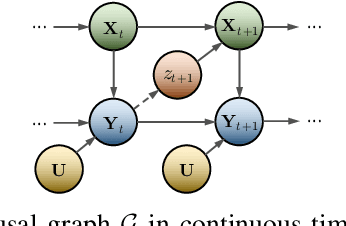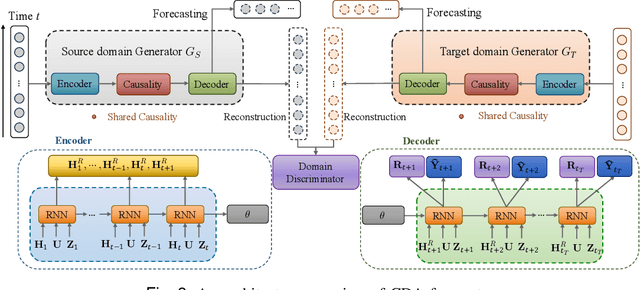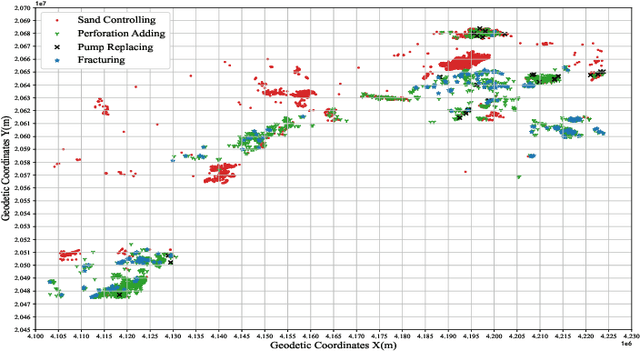Xing Guo
RainfalLTE: A Zero-effect Rainfall Sensing System Utilizing Existing LTE Infrastructure
May 20, 2025Abstract:Environmental sensing is an important research topic in the integrated sensing and communication (ISAC) system. Current works often focus on static environments, such as buildings and terrains. However, dynamic factors like rainfall can cause serious interference to wireless signals. In this paper, we propose a system called RainfalLTE that utilizes the downlink signal of LTE base stations for device-independent rain sensing. In articular, it is fully compatible with current communication modes and does not require any additional hardware. We evaluate it with LTE data and rainfall information provided by a weather radar in Badaling Town, Beijing The results show that for 10 classes of rainfall, RainfalLTE achieves over 97% identification accuracy. Our case study shows that the assistance of rainfall information can bring more than 40% energy saving, which provides new opportunities for the design and optimization of ISAC systems.
Research on Personalized Compression Algorithm for Pre-trained Models Based on Homomorphic Entropy Increase
Aug 16, 2024Abstract:In this article, we explore the challenges and evolution of two key technologies in the current field of AI: Vision Transformer model and Large Language Model (LLM). Vision Transformer captures global information by splitting images into small pieces and leveraging Transformer's multi-head attention mechanism, but its high reference count and compute overhead limit deployment on mobile devices. At the same time, the rapid development of LLM has revolutionized natural language processing, but it also faces huge deployment challenges. To address these issues, we investigate model pruning techniques, with a particular focus on how to reduce redundant parameters without losing accuracy to accommodate personalized data and resource-constrained environments. In this paper, a new layered pruning strategy is proposed to distinguish the personalized layer from the common layer by compressed sensing and random sampling, thus significantly reducing the model parameters. Our experimental results show that the introduced step buffering mechanism further improves the accuracy of the model after pruning, providing new directions and possibilities for the deployment of efficient and personalized AI models on mobile devices in the future.
Domain Adaptation for Industrial Time-series Forecasting via Counterfactual Inference
Jul 19, 2024



Abstract:Industrial time-series, as a structural data responds to production process information, can be utilized to perform data-driven decision-making for effective monitoring of industrial production process. However, there are some challenges for time-series forecasting in industry, e.g., predicting few-shot caused by data shortage, and decision-confusing caused by unknown treatment policy. To cope with the problems, we propose a novel causal domain adaptation framework, Causal Domain Adaptation (CDA) forecaster to improve the performance on the interested domain with limited data (target). Firstly, we analyze the causality existing along with treatments, and thus ensure the shared causality over time. Subsequently, we propose an answer-based attention mechanism to achieve domain-invariant representation by the shared causality in both domains. Then, a novel domain-adaptation is built to model treatments and outcomes jointly training on source and target domain. The main insights are that our designed answer-based attention mechanism allows the target domain to leverage the existed causality in source time-series even with different treatments, and our forecaster can predict the counterfactual outcome of industrial time-series, meaning a guidance in production process. Compared with commonly baselines, our method on real-world and synthetic oilfield datasets demonstrates the effectiveness in across-domain prediction and the practicality in guiding production process
Ensemble Interpretation: A Unified Method for Interpretable Machine Learning
Dec 11, 2023Abstract:To address the issues of stability and fidelity in interpretable learning, a novel interpretable methodology, ensemble interpretation, is presented in this paper which integrates multi-perspective explanation of various interpretation methods. On one hand, we define a unified paradigm to describe the common mechanism of different interpretation methods, and then integrate the multiple interpretation results to achieve more stable explanation. On the other hand, a supervised evaluation method based on prior knowledge is proposed to evaluate the explaining performance of an interpretation method. The experiment results show that the ensemble interpretation is more stable and more consistent with human experience and cognition. As an application, we use the ensemble interpretation for feature selection, and then the generalization performance of the corresponding learning model is significantly improved.
 Add to Chrome
Add to Chrome Add to Firefox
Add to Firefox Add to Edge
Add to Edge